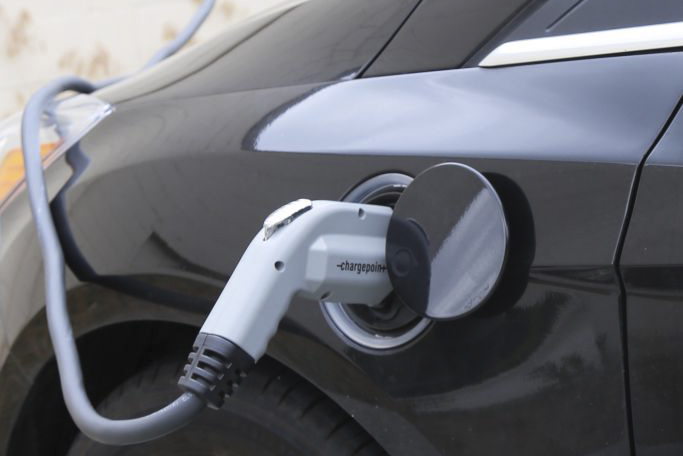In 2013, Goshen College’s Physical Plant installed an electric vehicle charging station outside of the Chairman Building, tucked away near the railroad tracks and the 9th Street entrance to campus.
Eight years later, the charging station is one of just three public stations in the city of Goshen.This number will continue to grow as the city plans to add several charging stations, contributing to a nationwide campaign to lay the groundwork for vast fleets of electric vehicles.
The two-plug EV charging station at the Chairman Building was set up to promote the use of renewable energy, said Glenn Gilbert, who at the time was the utilities manager and sustainability coordinator for Goshen College.
As for the location, Gilbert said, “It was a combination of where I could get electricity to it easily and where I wouldn’t get complaints for having two parking spaces taken up.”
While the station was not popular when it was first introduced, it has seen more use recently, said Gilbert, who retired last year as director of facilities for the college.
Several faculty and staff members, including President Rebecca Stoltzfus, own full-electric or plug-in hybrid vehicles.
The charging station is free for anyone to use, but users may be charged by the hour in the future, said Gilbert, who joined the cohort of electric vehicle owners in September when he bought a hybrid Prius Prime.
He said that instituting an hourly rate would help to cover the expenses for future charging units and allow more people to use the chargers.
It can cost anywhere from $2,000 to $8,000 to install EV charging stations, depending on their power level (1, 2 or 3) and the length of underground cable that is needed. The one outside of the Chairman Building is a Level 2 charging station. Gilbert expects that more will be installed on campus in the near future, given that more people are aware of the need for clean and renewable energy.
Goshen College technically runs on grid electricity, but the institution has purchased renewable energy credits for the past 10 years. This investment in renewable energy infrastructure helps to offset the greenhouse gas emissions associated with the grid.
Gilbert currently serves on the city of Goshen’s Mayoral Environmental Advisory Committee, which is planning the rollout of EV chargers in the city.
One is located outside of City Hall, and another was recently installed outside of the Goshen Public Library, according to Ross Riker, the automation manager at the library.
There is one to be installed at Goshen Brewing Company in the near future.
Local efforts such as these will be key in meeting President Joe Biden’s climate goal for the United States: by 2030, half of all automobiles in the U.S. must be electric. The country needs adequate infrastructure in order to make that happen. According to a report in The New York Times, the U.S. has around 100,000 public charging stations and needs 10 times that number in order to support the electric vehicle goal.
Duane Stoltzfus, a professor of communication and director of adult and graduate programs, charges his 2012 Nissan Leaf at the charging station near the Physical Plant.
“I’m grateful to Goshen College for providing this convenient and free charging option,” Stoltzfus said. “Unfortunately, I always find a charging lane open at the college station. I keep thinking that employees and students should be lined up with their electric vehicles. I would be happy to be inconvenienced if it meant that more people were driving electric. That day is coming and none too fast.”




